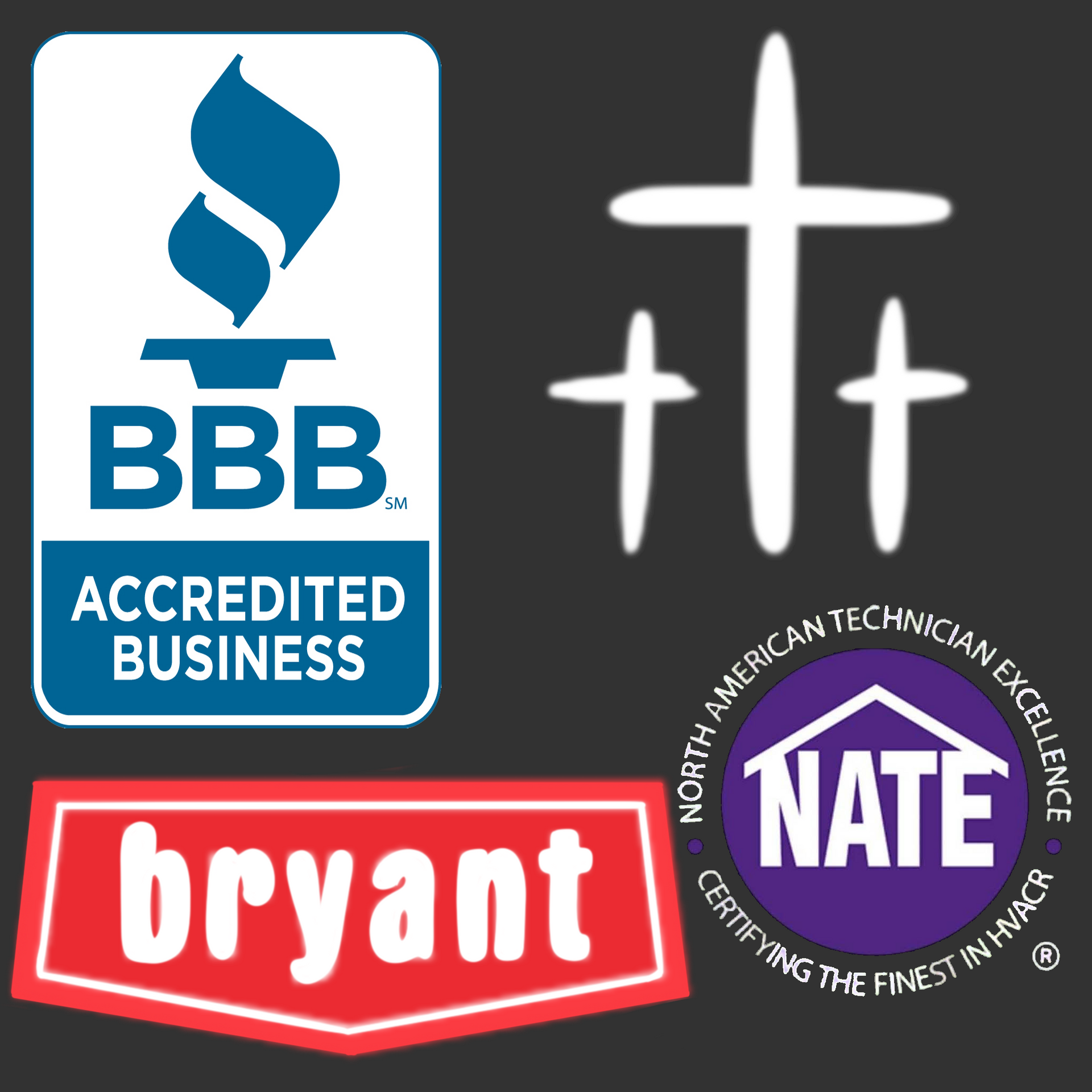Are Air Conditioning Units Expensive to run?
Cody Roy Ferguson • August 18, 2025
Is Your Air Conditioner Draining Your Wallet?
Here’s How to Save Big This Summer
As temperatures climb, air conditioning quickly becomes a necessity—not a luxury. But if you’re noticing skyrocketing energy bills every summer, your AC system could be the main culprit. At FerguSon's Heating & cooling, we believe in keeping you cool without burning through your savings. Let’s break down why your current AC might be costing you more than it should—and what you can do about it.
The True Cost of Running an Old AC Unit
Air conditioners, especially older models, are notorious energy hogs. Units that are 10–15 years old often operate at half the efficiency of modern systems. That means:
- Higher energy bills
month after month
- Frequent repair
costs
- Poor cooling performance, especially during heatwaves
- More strain on your home’s electrical
system
If your unit is over a decade old, it could be using up to twice the electricity of today’s high-efficiency models.
Why AC Bills Get Out of Control
There are a few key reasons your AC bills might be rising faster than the temperature:
- Low SEER Rating
– Seasonal Energy Efficiency Ratio (SEER) measures how efficiently your AC runs. Older
units have ratings as low as 8–10 SEER. Today’s systems are required to have at least 14–15 SEER,
with high-efficiency options reaching 20+.
- Poor Maintenance
– Dirty filters, clogged coils, and refrigerant leaks can all reduce efficiency.
- Wrong Size Unit
– An AC that’s too small runs constantly, while one that’s too big cycles on and off, wasting energy both ways.
- Outdated Thermostats
– Manual thermostats or basic digital models can’t optimize energy use the way smart thermostats
can.
Cost-Effective Ways to Lower Your AC Bills
Before you suffer through another expensive summer, consider these energy-saving tips:
- Upgrade
to a High-Efficiency System
Replacing your outdated unit with a modern, energy-efficient air conditioner can slash your energy bills by up to 40%. Plus, with manufacturer rebates and energy incentives, the upfront cost may be lower than you think.
- Install a Smart Thermostat
Smart thermostats learn your schedule and adjust cooling accordingly, saving energy when you’re not home and keeping you comfortable when you are.
- Schedule Regular Maintenance
A well-maintained system runs more efficiently. Our affordable service plans keep your system in peak condition all year round.
- Seal and Insulate
Proper insulation and sealing air leaks prevent cool air from escaping, reducing the load on your AC.
- Use Ceiling Fans
They help circulate air more effectively, allowing you to raise your thermostat by a few degrees without sacrificing comfort.
Let’s Talk Numbers
Think your old AC
is “good enough”? It could be costing you hundreds—if not thousands—more than necessary over its remaining lifespan.
Let’s run the numbers together. We offer free in-home consultations to show you how much you could save by upgrading.
We’ll help you:
- Choose the right system
size for your home
- Understand available rebates
and financing options
- Remove your old unit and install
your new system quickly and cleanly
- Set up smart thermostat controls for optimal savings
Call us at (720)-737-6311
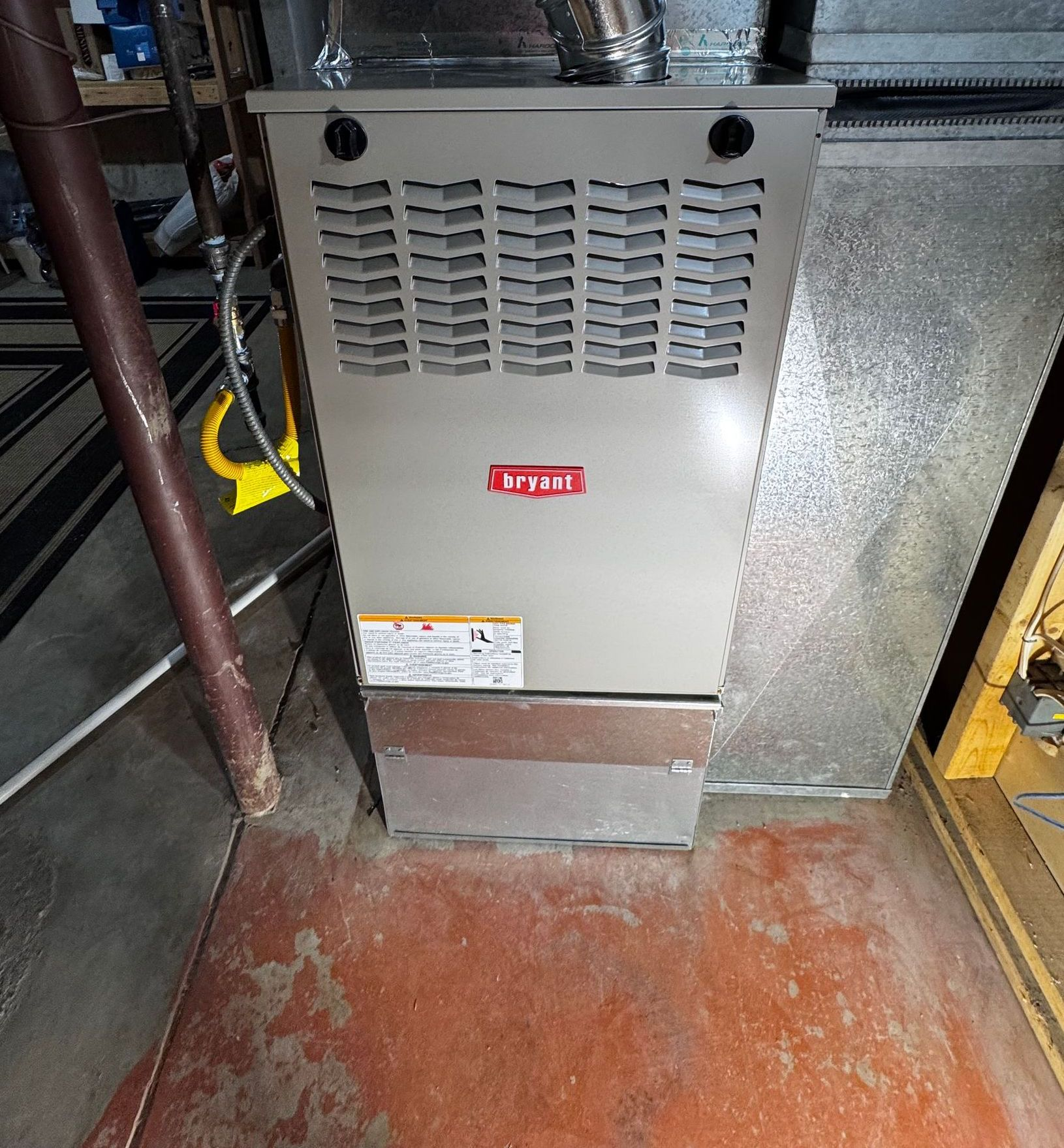
If you’ve been considering replacing your furnace, there’s an important industry shift happening that homeowners need to know about: 80% AFUE furnaces may be going away soon, and once they do, the cost of replacing your heating system is almost guaranteed to rise . For decades, 80% furnaces have been a reliable, affordable option. But new regulations and manufacturing changes mean they may not be available for much longer . That makes right now the best—and possibly the last—window to install a cost-effective 80% unit before prices climb and choices shrink. Here’s what’s happening and why acting now can save you money. What’s an 80% Furnace, and Why Are They So Popular? An 80% AFUE furnace converts 80% of the fuel it burns into heat. These furnaces are popular because: They’re less expensive than high-efficiency (90–98%) models. They don’t require PVC venting or a condensate drain . Installation is simplified, fast, and inexpensive—especially in older homes or houses with venting limitations. They offer reliable heating with lower upfront costs . But that simplicity and low cost are exactly why homeowners should act before they’re gone . Why 80% Furnaces Might Be Disappearing 1. Efficiency Regulations Are Tightening Upcoming federal and state efficiency standards are pushing manufacturers toward higher AFUE ratings. As these requirements roll out, 80% furnaces may no longer meet minimum standards in many regions. 2. Manufacturers Are Cutting Back Production When regulations tighten, manufacturers shift production to higher-efficiency units. This means: Fewer 80% models will be made Fewer units will be stocked by distributors Prices will rise as inventory gets scarce This has already happened with other HVAC equipment( see R-454b refrigerant ) —once production slows, prices go up quickly. 3. Certain Markets Are Already Phasing Them Out Some states (including Colorado) are moving toward eliminating lower-efficiency gas appliances. Even if your state isn’t mandating changes yet, national manufacturing trends affect everyone . What Happens When 80% Furnaces Are Gone? If your home currently uses an 80% furnace and it fails after the phase-out , your only replacement option may be a high-efficiency condensing furnace, which requires: PVC venting or re-venting existing ducts A condensate drain line and pump Additional installation materials and labor That means a significantly higher total cost, even if the equipment price is similar. For many homes—especially townhomes, condos, interior closets, and tight attics—i nstalling a high-efficiency furnace can be far more complicated and expensive than replacing an 80% unit. Why Now Is the Best Time to Buy an 80% Furnace 1. Prices Are Lower Right Now As long as 80% furnaces are still being produced, they remain the cheapest furnace option. Once production slows or stops, prices will rise quickly due to: Limited inventory Increased demand from last-minute buyers The shift toward more expensive high-efficiency components Buying now avoids that inflation. 2. Installations Are Simple and Affordable Right now, swapping an older 80% furnace for a new 80% model is straightforward. No major home modifications needed. Once these units disappear, you may face: Major venting work Higher labor charges Longer installation times More invasive construction Upgrading today prevents a future headache. 3. Perfect for Homes Where High Efficiency Is Difficult Some homes simply aren’t designed for high-efficiency venting without costly retrofits. If you live in: A multi-story home A condo or townhouse A home with interior mechanical rooms A tight crawlspace or attic … you could be looking at thousands of dollars in additional work if 80% options vanish. 4. You Lock In a Replacement Before a Crisis Most furnaces fail during the coldest days of winter—when demand is highest and prices spike. Replacing proactively ensures: Better pricing More model choices No emergency install fees The Bottom Line: If You Want an 80% Furnace, Don’t Wait The industry is moving toward higher efficiency standards, and 80% furnaces are likely to become harder to find—and more expensive—very soon. If your furnace is aging, unreliable, or over 15 years old, now is the ideal time to replace it while: Inventory is still strong Prices are still low Installation is still simple Once the shift happens, y ou may lose the option entirely—and face a much more expensive replacement. Call us at (720)-737-6311
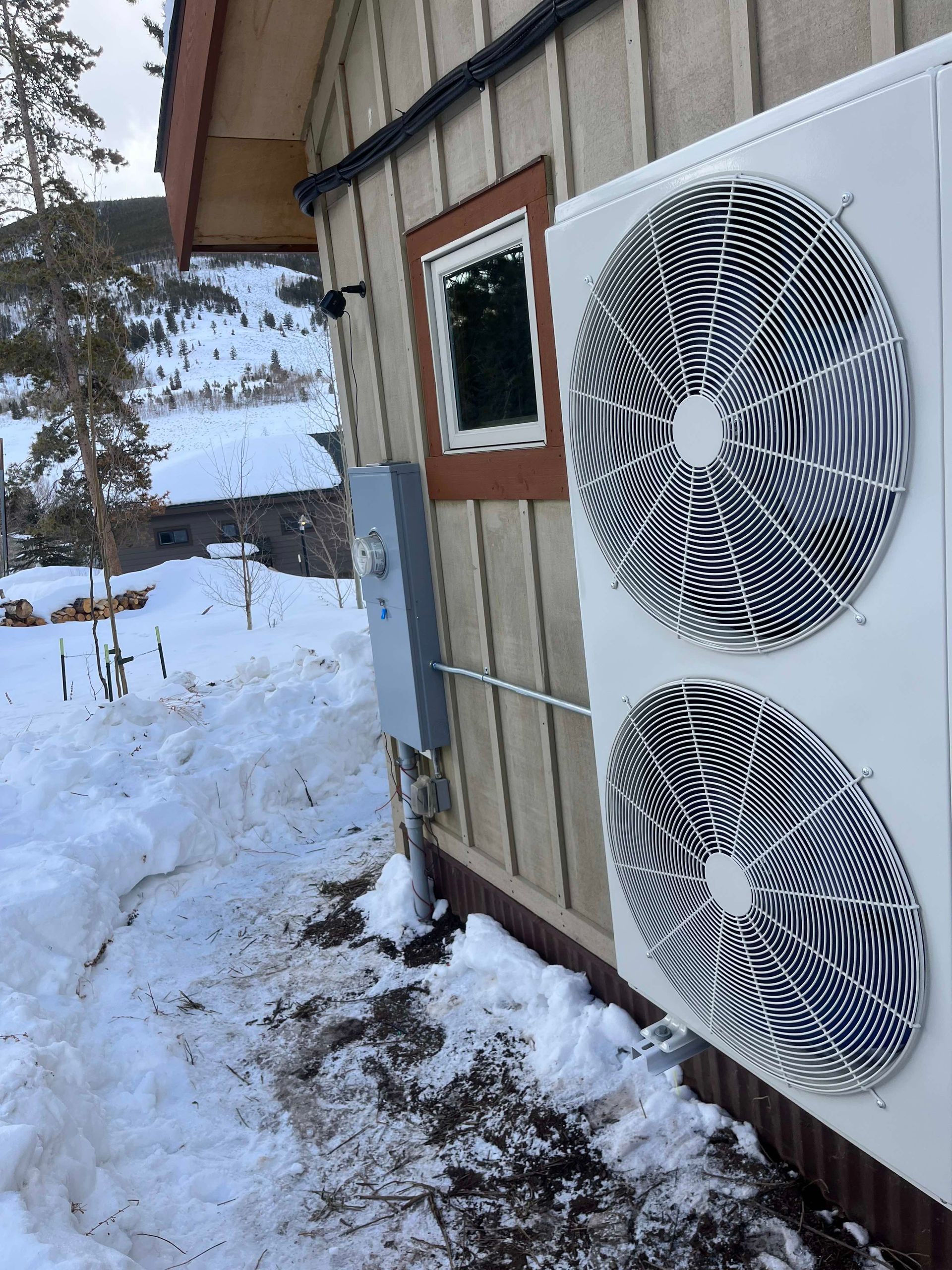
When it comes to saving energy and staying comfortable at night, homeowners often ask: “Should I turn off my AC at night?” In this blog, we’ll break down the pros and cons so you can make the right choice for your home—and your energy bill. The Quick Answer No, you typically shouldn’t turn off your AC completely at night , especially during warm seasons . I nstead, consider turning the thermostat up a few degrees or using energy-saving features like programmable thermostats or “sleep” modes. Why People Consider Turning Off Their AC at Night There are two main reasons homeowners think about turning off their AC at night: To Save on Energy Costs: It makes sense—if the AC isn’t running, it’s not using electricity. But the actual savings might not be as big as you expect , especially if your home heats up overnight and your system has to work harder to cool it down in the morning. For Health or Comfort: Some people feel too cold while sleeping with the AC on. Others are concerned about air quality or dryness caused by constant air conditioning. Here’s What Really Happens If You Turn It Off Turning off your air conditioner completely can lead to: Increased Humidity: Without your AC running, humidity levels in your home can rise , making it feel warmer and less comfortable. Disrupted Sleep: Studies show people sleep better in cooler temperatures (around 60-67°F). Turning off your AC might make it harder to fall or stay asleep. Overworking Your AC Later: If your home heats up overnight, your system will need to work harder in the morning to bring the temperature back down, which could cancel out any energy savings. Better Alternatives to Turning Off Your AC at Night Instead of shutting it down completely, here are a few smarter ways to stay cool and save money: Use a Programmable or Smart Thermostat Set your thermostat to increase the temperature by 2–4°F at night . You likely won’t notice a big change in comfort, but you will see a difference on your energy bill. Turn on ‘Sleep’ or Eco Modes Many modern AC units have energy-saving features that automatically adjust cooling at night to maintain comfort with less energy use. Improve Home Insulation A well-insulated home retains cool air longer , meaning your AC doesn’t have to run as often—even during the night. Use Fans to Circulate Air A ceiling or box fan can help circulate cool air and make your bedroom feel more comfortable without lowering the thermostat. The Bottom Line Turning off your AC at nigh t isn’t usually the best move . Instead, adjust the temperature settings, use fans, and rely on smart technology to strike the perfect balance between comfort and energy efficiency. I f your energy bills are climbing or your AC isn’t keeping up, it might be time for a system check. Contact our team at FerguSon's—we're here to keep your home cool, efficient, and comfortable all summer long. Call us at (720)-737-6311

As the leaves begin to change and the air turns crisp, it’s the perfect time to enjoy pumpkin spice everything and cozy sweaters. But before you dive into full fall mode, there’s one essential item to check off your to-do list: getting your HVAC system ready for the season. A fall HVAC check-up isn’t just a good idea— it’s a must. And why now is the perfect time to schedule your appointment with us. 1. Prevent Surprise Breakdowns After working hard all summer to keep your home cool, your HVAC system needs some TLC. Without maintenance, small issues can turn into major breakdowns—often right when you need heat the most. Don’t get left in the cold. A quick fall inspection now can prevent an emergency repair later . 2. Improve Energy Efficiency A well-maintained HVAC system runs more efficiently, saving you money on your energy bills. Dusty filters, worn-out parts, and thermostat issues can make your system work harder than it needs to. We’ll make sure your system is running at peak performance, so you stay comfortable and save money all season long. 3. Extend the Life of Your System Routine maintenance can add years to the life of your HVAC unit. Think of it like a car—regular tune-ups mean fewer breakdowns and better long-term performance. An HVAC tune-up now is an investment in your system’s future. 4. Improve Indoor Air Quality Fall allergens like mold, ragweed, and dust mites can sneak into your home and linger. During a maintenance visit, we check and replace filters, clean your system, and make sure your air is as fresh as the autumn breeze. Breathe easy this fall. We’ll help keep your indoor air clean and healthy. 5. Avoid the Seasonal Rush Every year, we see a spike in calls right as the first cold snap hits . Appointments fill up fast—and if your heat goes out, you could be stuck waiting . Beat the rush and schedule early. That way, your system is ready when you need it most. Ready to Book Your Fall HVAC Tune-Up? Don't wait for the cold weather to take you by surprise. Call FerguSon's Heating & Cooling today and get ahead of the season with professional HVAC maintenance from our trusted technicians. 📞 Call us now at 720-737-6311 or 💻 Book your appointment online under the contact Page Bonus : Ask about our Fall Tune-Up Special—limited-time discounts available while appointment slots last! (mention this post!)
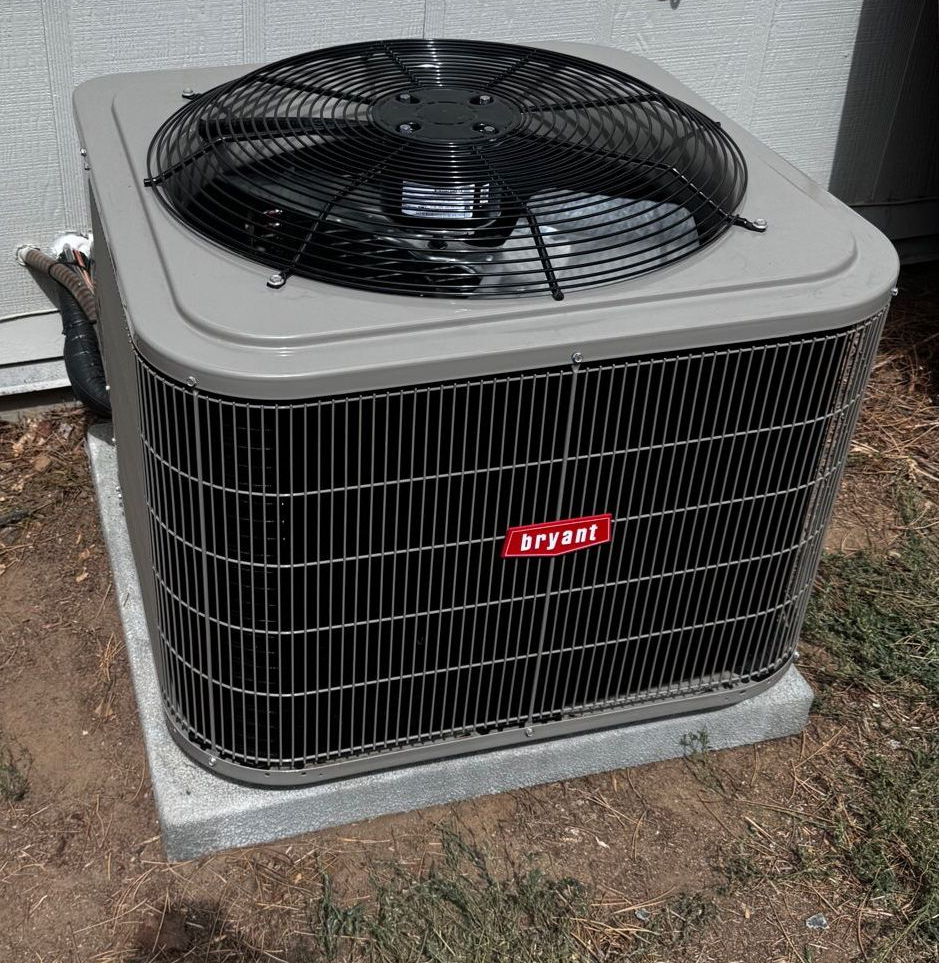
When it comes to saving energy and staying comfortable at night, homeowners often ask: “Should I turn off my AC at night?” In this blog, we’ll break down the pros and cons so you can make the right choice for your home—and your energy bill. The Quick Answer No, you typically shouldn’t turn off your AC completely at night , especially during warm seasons . I nstead, consider turning the thermostat up a few degrees or using energy-saving features like programmable thermostats or “sleep” modes. Why People Consider Turning Off Their AC at Night There are two main reasons homeowners think about turning off their AC at night: To Save on Energy Costs: It makes sense—if the AC isn’t running, it’s not using electricity. But the actual savings might not be as big as you expect , especially if your home heats up overnight and your system has to work harder to cool it down in the morning. For Health or Comfort: Some people feel too cold while sleeping with the AC on. Others are concerned about air quality or dryness caused by constant air conditioning. Here’s What Really Happens If You Turn It Off Turning off your air conditioner completely can lead to: Increased Humidity: Without your AC running, humidity levels in your home can rise , making it feel warmer and less comfortable. Disrupted Sleep: Studies show people sleep better in cooler temperatures (around 60-67°F). Turning off your AC might make it harder to fall or stay asleep. Overworking Your AC Later: If your home heats up overnight, your system will need to work harder in the morning to bring the temperature back down, which could cancel out any energy savings. Better Alternatives to Turning Off Your AC at Night Instead of shutting it down completely, here are a few smarter ways to stay cool and save money: ✅ Use a Programmable or Smart Thermostat Set your thermostat to increase the temperature by 2–4°F at night. You likely won’t notice a big change in comfort, but you will see a difference on your energy bill. ✅ Turn on ‘Sleep’ or Eco Modes Many modern AC units have energy-saving features that automatically adjust cooling at night to maintain comfort with less energy use. ✅ Improve Home Insulation A well-insulated home retains cool air longer, meaning your AC doesn’t have to run as often—even during the night. ✅ Use Fans to Circulate Air A ceiling or box fan can help circulate cool air and make your bedroom feel more comfortable without lowering the thermostat. Call us at (720)-737-6311
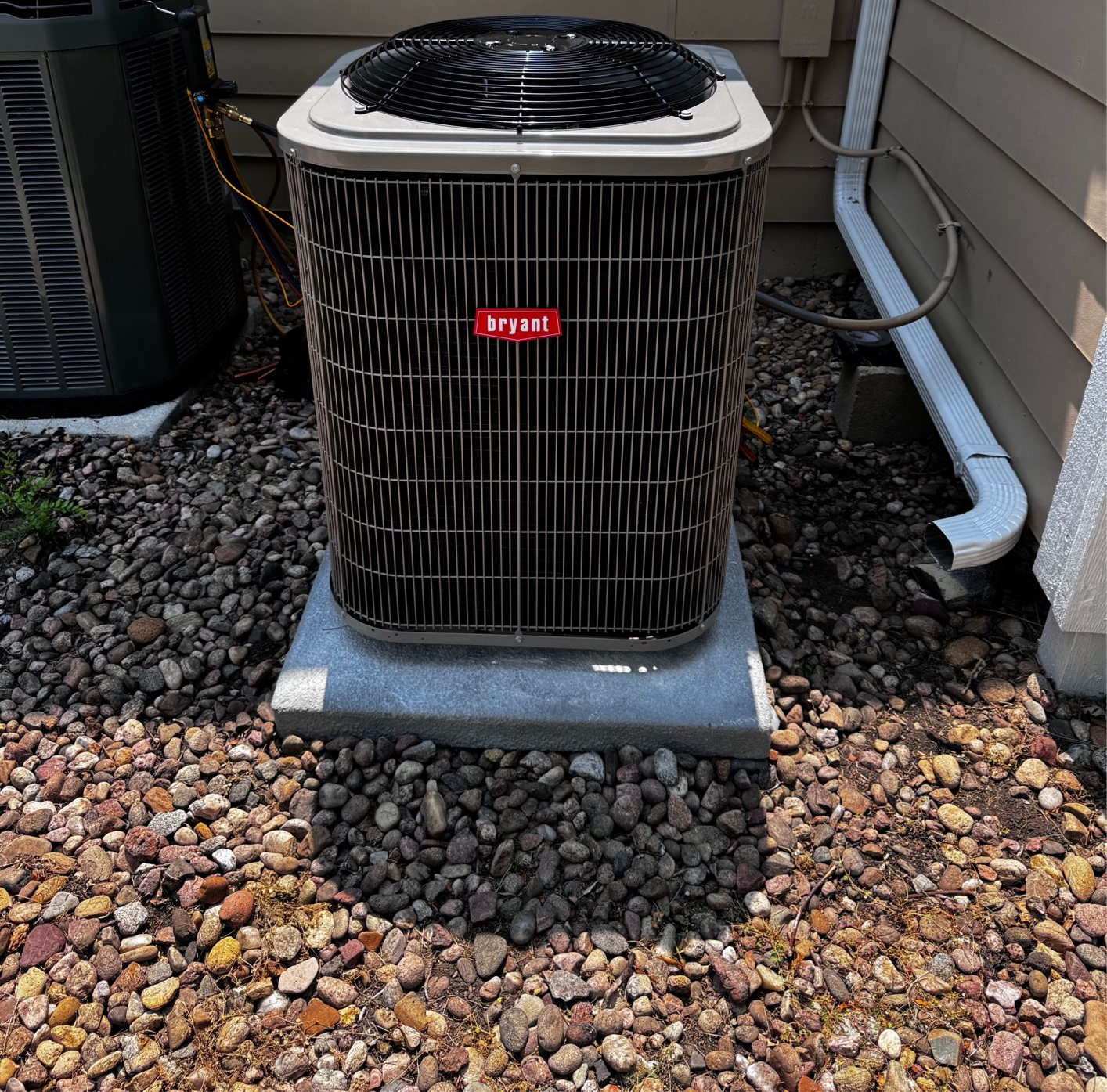
Imagine living through a scorching summer without any relief from the heat. For most of human history, that was reality. But thanks to a revolutionary invention— air conditioning —our modern lives have become significantly more comfortable, productive, and even safer. The history of AC is more than just a story of cool air; it’s a story of how technology reshaped the way we live, work, and build our cities. The Origins of Cooling Long before mechanical systems existed, ancient civilizations sought creative ways to stay cool. Egyptians used wet reeds in windows to cool incoming breezes. The Romans circulated aqueduct water through walls. In 2nd century China, inventor Ding Huan created a manually powered rotary fan. But none of these methods offered consistent or large-scale relief from heat. The real turning point came in the early 20th century with the birth of modern air conditioning. Willis Carrier and the Birth of Modern AC In 1902, Willis Haviland Carrier , a young engineer, invented the first electrical air conditioning system—not for comfort, but to solve a humidity problem at a printing plant in Brooklyn, New York. The high humidity was causing the paper to warp and the ink to misalign. Carrier’s system controlled both temperature and humidity, dramatically improving printing quality. His invention worked by blowing air over cold coils, cooling and dehumidifying the air —an early version of what we still use today. Carrier went on to found the Carrier Engineering Corporation in 1915 , laying the foundation for a new industry. From Factories to Theaters to Homes Initially, air conditioning was used mainly in industrial settings to improve manufacturing conditions—for example, in textile mills and pharmaceutical labs. But by the 1920s , the technology began to spread to public spaces. Movie theaters were among the first to adopt AC for comfort. In the 1920s and 30s, theaters advertised “ refrigerated air ” to draw in summer crowds. The success was immediate. For many people, the local movie theater became their first experience with cool indoor air during hot summers. By the 1950s , residential air conditioning started to take off, particularly in the United States. As window units became more affordable and central systems more efficient, AC transformed from a luxury to a standard feature in many homes. AC’s Global Impact The widespread adoption of air conditioning has had a profound impact on society: 1. Urban Development and Population Growth Air conditioning enabled large-scale development in hot and humid regions. Cities like Houston, Dubai, Singapore, and Phoenix saw explosive growth, much of it made possible because indoor spaces could be made livable year-round. 2. Economic Productivity By regulating indoor temperatures, AC has increased productivity in workplaces, improved conditions in data centers, and allowed for longer operating hours in retail and service industries. 3. Health and Safety AC has reduced heat-related illnesses and deaths, particularly among vulnerable populations. It also supports hospitals, food storage, and laboratories —key infrastructure for public health. 4. Cultural Shifts AC influenced architecture (goodbye, high ceilings and cross-ventilation), led to changes in building design (more sealed glass towers), and even reshaped how people spend their time—indoors, in climate-controlled environments . More Than Just Cool Air Air conditioning has done more than keep us cool. It has transformed economies, reshaped cities, improved public health , and changed our daily lives. As we look ahead, the next chapter in AC’s story will be about making cooling accessible, efficient, and climate-friendly. From the printing press in 1902 to skyscrapers in Dubai, the journey of AC is a powerful example of how a single invention can reshape the world. Innovations are on the rise. Advances in green building design, solar-powered AC , more efficient heat pumps , and new refrigerants are making sustainable cooling more attainable. Call us at (720)-737-6311
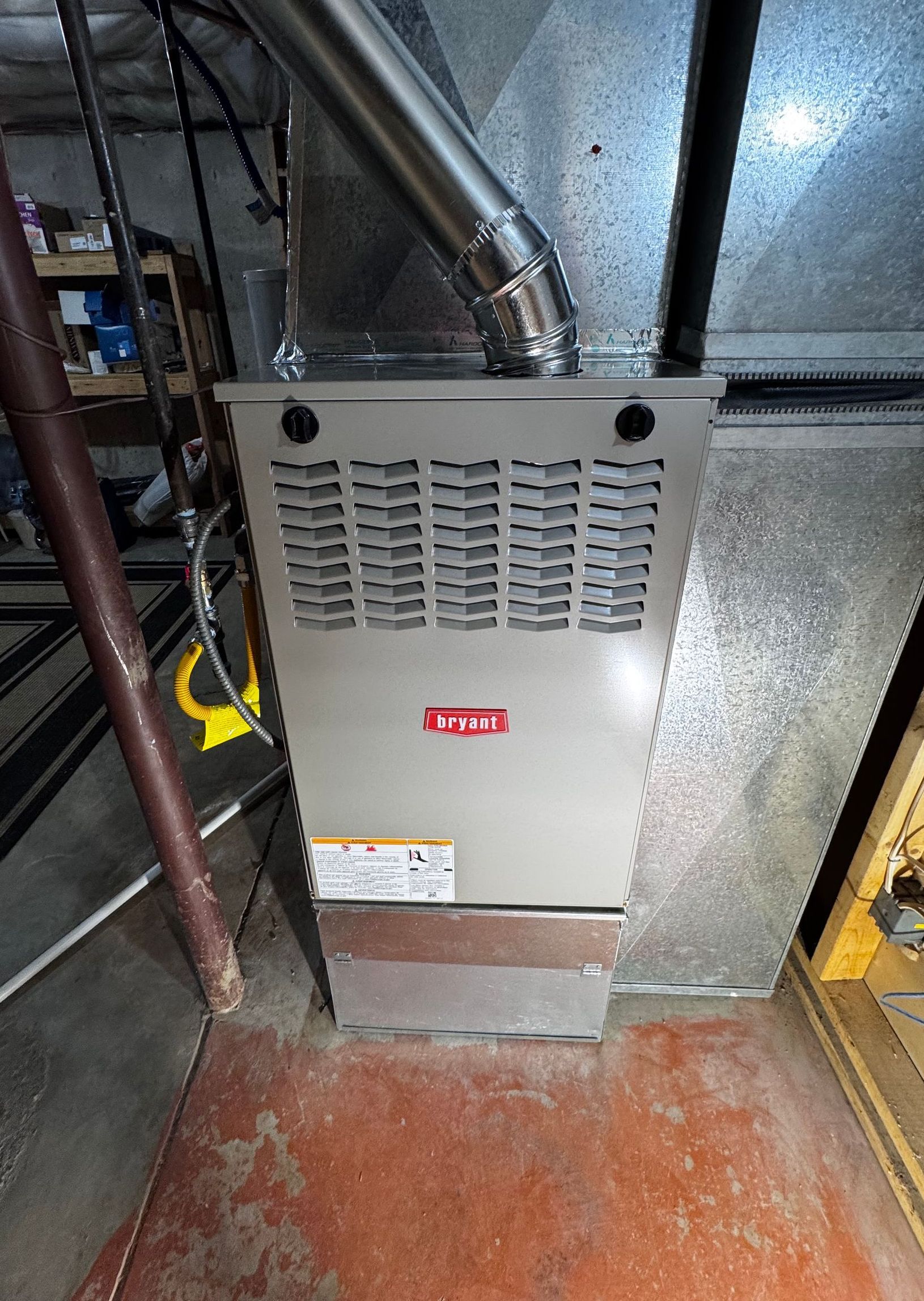
If you’re a homeowner in Colorado, you know how brutal winters can get — and the last thing you want is for your old furnace to quit in the middle of a snowstorm. Investing in a new high-efficiency furnace is not just a smart move; it’s a long-term investment in comfort, safety, and savings. we’ll break down the top reasons why now is the best time to upgrade your furnace and how your home — and your wallet — will benefit. 1. Stay Warm and Comfortable During Harsh Colorado Winters Winters in Colorado can bring freezing temperatures, especially in areas like Denver, Colorado Springs, and Fort Collins. An older furnace might struggle to keep up, leading to cold spots and uneven heating. A modern furnace provides: Faster, more even heat distribution Advanced thermostatic control Quieter operation 2. Lower Your Energy Bills with a High-Efficiency Furnace New furnaces today come with AFUE ratings of 90% or higher, meaning they convert nearly all fuel into usable heat. That can add up to 30% energy savings compared to older models. In Colorado, where heating costs spike during the winter, a new furnace can significantly reduce monthly energy bills. 3. Increase Your Home’s Resale Value A new furnace is a strong selling point for Colorado homebuyers. Whether you’re in Boulder or Pueblo, installing a new heating system adds long-term value and peace of mind for potential buyers. Plus, updated HVAC systems often pass home inspections more smoothly — no red flags for outdated or inefficient equipment. 4. Improve Indoor Air Quality Older furnaces can circulate dust, allergens, and even carbon monoxide if not properly maintained. Newer systems offer advanced filtration and sealed combustion, improving your indoor air quality and family’s health. Especially for homes in higher-elevation areas or those prone to allergies, upgrading your furnace makes a noticeable difference in air quality. 6. Avoid Emergency Repairs When You Need Heat Most Replacing your furnace before it fails saves you the stress of emergency repairs or middle-of-the-night breakdowns. HVAC companies often offer off-season deals or priority scheduling in late summer and early fall — before the winter rush begins. Pro Tip: Don’t wait until your furnace dies — the best time to replace it is before it becomes an emergency .
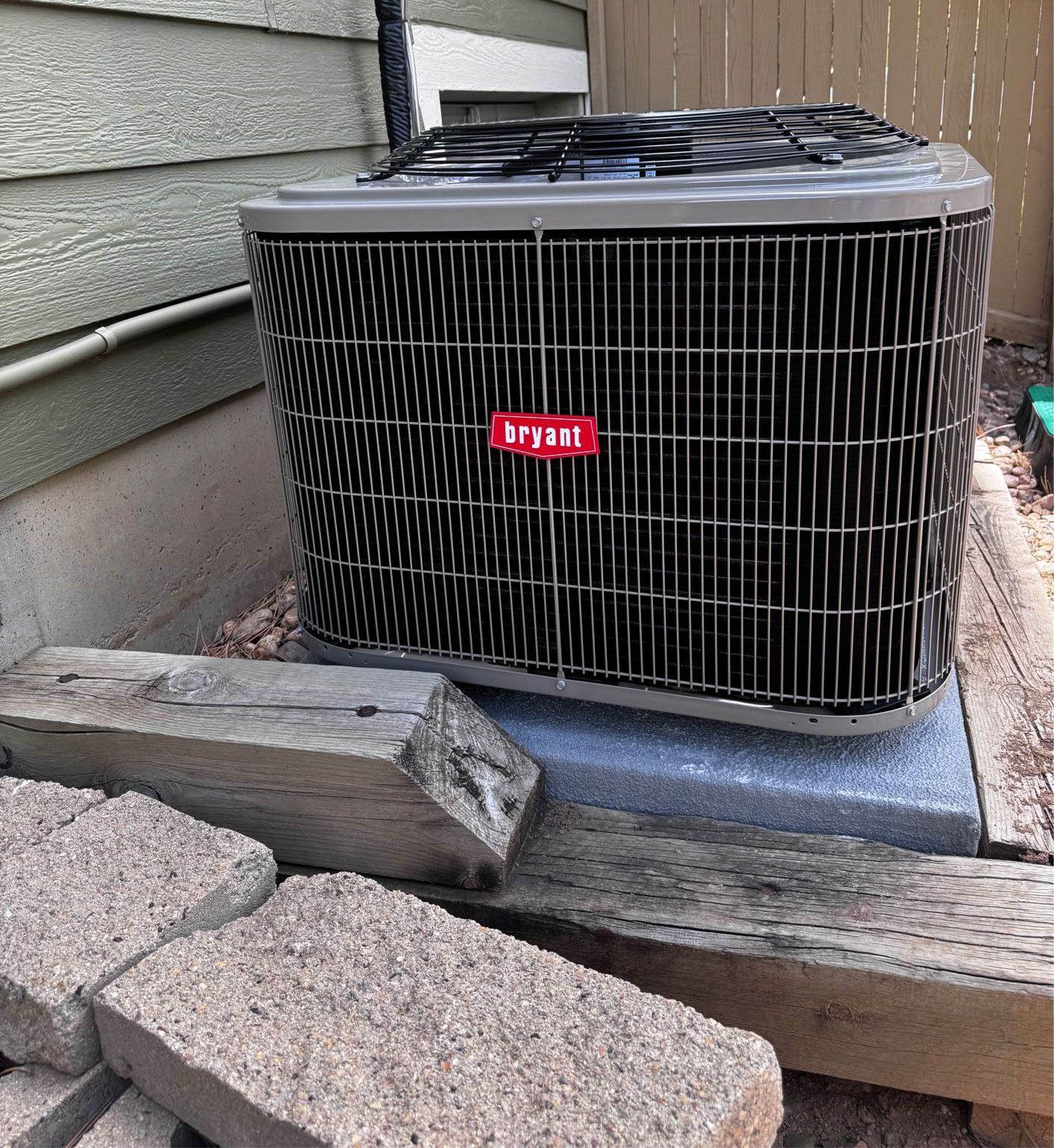
R-454B is the future of air conditioning in Colorado. Learn how upgrading your AC now means better efficiency, lower environmental impact, and long-term compliance with new refrigerant regulations. As the HVAC industry moves toward a cleaner, more energy-efficient future, R-454B air conditioners are leading the charge. With older refrigerants like R-410A being phased down due to environmental regulations, now is the ideal time for Colorado homeowners to consider upgrading to a new R-454B AC system. Whether you live in Denver, Colorado Springs, Fort Collins , or the surrounding areas, investing in an R-454B system can save you money, improve your home’s performance , and futureproof your comfort for years to come. What Is R-454B, and Why Does It Matter? R-454B is a next-generation, low-GWP (Global Warming Potential) refrigerant designed to replace R-410A in residential and light commercial air conditioning systems. It has: 78% lower GWP than R-410A Comparable performance with improved energy efficiency Reduced environmental impact Mild flammability classification (A2L) It’s part of a global shift to more climate-friendly HVAC technologies and is supported by EPA AIM Act regulations and international agreements like the Kigali Amendment . 1. Stay Ahead of Refrigerant Phaseouts R-410A is already being phased down in 2025 , meaning prices will rise, parts will become scarce, and systems that use it will become harder to maintain. By upgrading to an R-454B AC system now, you avoid: Higher maintenance costs Limited replacement parts Regulatory compliance issues 2. Lower Environmental Impact R-454B has a GWP of just 466 , compared to R-410A’s GWP of 2,088 . That makes it one of the most eco-friendly refrigerant options on the market today. Switching helps: Reduce your home’s carbon footprint Support Colorado’s clean energy goals Qualify for potential green building incentives 3. Improve Energy Efficiency and Comfort Many new R-454B systems come paired with high-efficiency heat pumps and variable-speed technology . That means: Lower utility bills Quieter operation Better humidity control Faster cooling during peak summer heat Colorado summers are getting warmer — and this is a smart way to stay cool efficiently. 4. Boost Home Value and Marketability Buyers are increasingly looking for green, future-ready homes . An upgraded HVAC system with R-454B adds real value and shows your home is: Up-to-date with modern standards Energy-efficient and environmentally conscious Free from future refrigerant-related issues Why Choose Us for Your R-454B AC Upgrade? As a local, licensed HVAC company serving Colorado, we: ✅ Specialize in R-454B system installation ✅ Provide expert consultations and honest pricing ✅ Handle permits, rebates, and compliance ✅ Back our work with industry-leading warranties Don’t Wait for R-410A to Be Outlawed — Upgrade Your AC Today With regulations tightening and demand for R-454B systems rising, now is the best time to make the switch. Whether you’re replacing an aging system or building a new home, a R-454B air conditioner is the smartest and most sustainable choice you can make in 2025. 📞 Call today or schedule your free estimate online. (720)-737-6311 Let’s get your home future-ready — before the next Colorado heat wave hits.
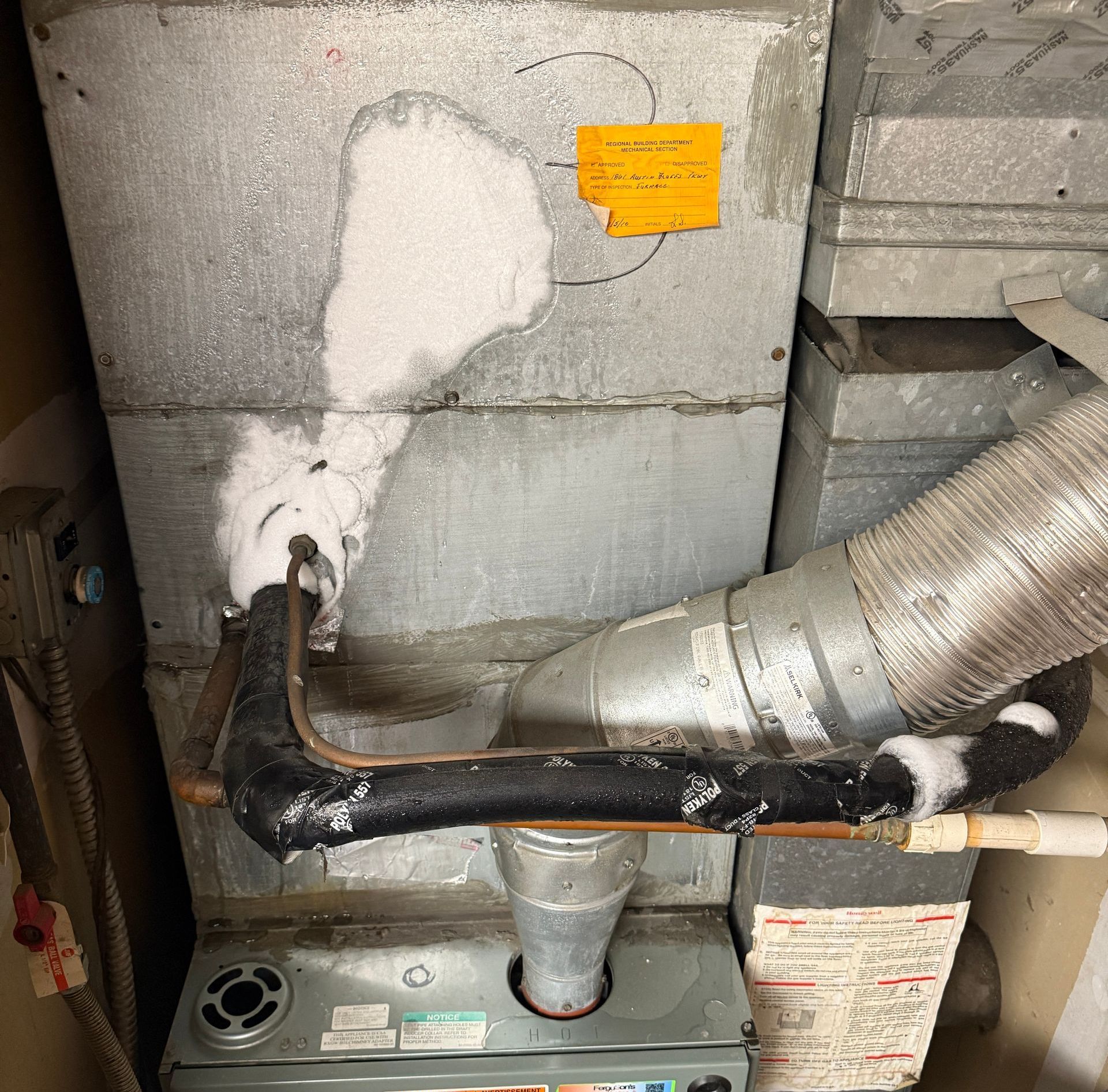
Is your AC unit frozen? A frozen air conditioner is one of the most common — and frustrating — HVAC problems homeowners face, especially during peak summer heat. You might notice ice on the evaporator coils , poor airflow , or your AC just blowing warm air . The good news? A f rozen AC doesn’t always mean major repairs . But acting quickly is key. As your trusted local HVAC company, we’ve put together this step-by-step guide to help you respond safely and effectively when your air conditioner freezes. Step 1: Turn Off Your AC Immediately The first thing you should do is turn off your air conditioner at the thermostat. Continuing to run it while frozen can: Damage the compressor Waste energy Make the problem worse Set your system to “OFF” and switch the fan to “ON” to help thaw the ice faster. Step 2: Check for Airflow Blockages Poor airflow is one of the top causes of a frozen AC unit. Once your system is off, check for these common airflow issues: ✅ Dirty air filter — Replace it if it’s clogged ✅ Closed or blocked vents — Make sure all supply and return vents are open and unobstructed ✅ Dirty evaporator coil — Excess dust can insulate the coil and cause freezing Pro Tip: If your filter looks like it hasn’t been changed in a while, that could be the culprit. Step 3: Let the Ice Melt Completely Depending on how frozen your AC is, it can take a few hours up to a full day for the ice to thaw. ⚠️ Do not chip away at the ice! This can damage the coils and void your warranty. Speed up the process by: Running the fan only (if safe) Opening nearby windows to improve air circulation Using a box fan to help circulate air near the indoor unit Step 4: Inspect Your Condensate Drain Line While your system is thawing, check the drain pan and condensate line for clogs or standing water . If the line is blocked, it can cause water to back up and freeze around the coil. Signs of a clogged line include: Water around the indoor unit A musty smell Frequent shutdowns Step 5: Schedule a Professional HVAC Inspection A frozen AC can be a sign of underlying issues , including: Low refrigerant levels Blower motor problems Dirty or damaged coils Ductwork restrictions Thermostat malfunctions Our certified technicians can diagnose the root cause and get your AC running efficiently again — before it becomes a more expensive repair. Prevent Future Freezing: Pro Maintenance Tips To avoid another frozen AC this summer: ✅ Change your filter every 1–3 months ✅ Schedule seasonal HVAC maintenance ✅ Keep vents open and unobstructed ✅ Don’t set your thermostat too low for long periods ✅ Watch for signs of refrigerant leaks (hissing, low cooling) Need Help With a Frozen AC in Colorado? Don’t suffer in the heat — let our expert HVAC team help. We serve homeowners across Denver, Colorado Springs, Fort Collins, and surrounding areas with fast, honest AC repairs and preventive maintenance. 📞 Call now or book an appointment online — we’ll get your home cool again in no time. Bonus Tip: Frozen AC problems are often preventable with regular tune-ups . Ask us about our Seasonal Maintenance Plans and keep your system running at peak performance all year.
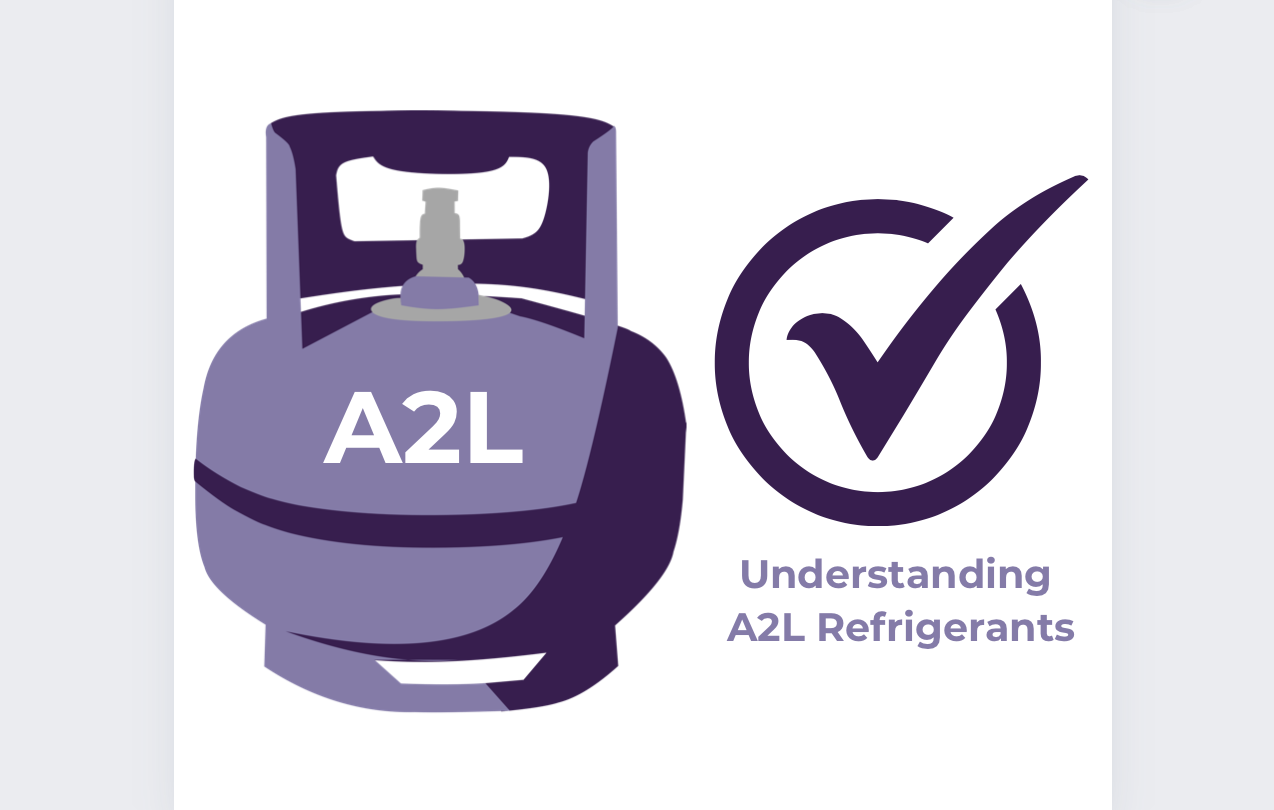
1. Environmental Impact A2L refrigerants are l ow-GWP refrigerants , meaning they have a drastically reduced potential to contribute to global warming compared to traditional refrigerants like R-410A. R-410A has a GWP of 2,088 . R-32 has a GWP of 675 . R-454B has an even lower GWP of 466 . This makes A2Ls a c limate-conscious choice that supports global and national efforts to reduce greenhouse gas emissions. As part of the HFC phasedown under the AIM Act , these refrigerants are a forward-looking solution aligned with environmental regulations. 2. Energy Efficiency = Lower Utility Bills A2L refrigerants, particularly R-32 , are known for their superior thermodynamic efficiency , which means HVAC systems using them often consume less energy to cool or heat your home. R-32 is around 10% more efficient than R-410A. Systems using A2Ls often have higher SEER2 ratings (Seasonal Energy Efficiency Ratio). This i ncreased efficiency translates to: Lower monthly energy bills Reduced wear and tear on your HVAC components Less energy waste , benefiting both your wallet and the planet
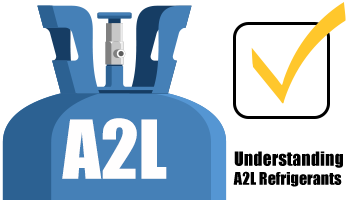
If you're planning to upgrade your HVAC system or replace your air conditioner soon, you may start hearing about a new class of refrigerants called A2L refrigerants, including R-32 and R-454B. These newer refrigerants are becoming the industry standard, and it’s important for homeowners to understand why the change is happening and what it means for your home comfort system. What Are A2L Refrigerants? A2L refrigerants are a new generation of refrigerants that offer lower Global Warming Potential (GWP) compared to older refrigerants like R-410A. The term "A2L" refers to their safety classification: A: Non-toxic 2L: Mildly flammable While the word “flammable” might raise concerns, it’s important to know that A2L refrigerants have been proven safe when used correctly and according to updated building codes and safety regulations. Why Are A2L Refrigerants Replacing R-410A? The HVAC industry is shifting away from high-GWP refrigerants due to environmental regulations and global efforts to reduce greenhouse gas emissions. R-410A, the common refrigerant used for the past two decades, has a high GWP of 2,088. In comparison: R-32 has a GWP of 675 (about 68% lower than R-410A) R-454B has a GWP of 466 (about 78% lower than R-410A) This change is part of broader policies such as the American Innovation and Manufacturing (AIM) Act, which mandates a phasedown of HFC refrigerants in the United States.

